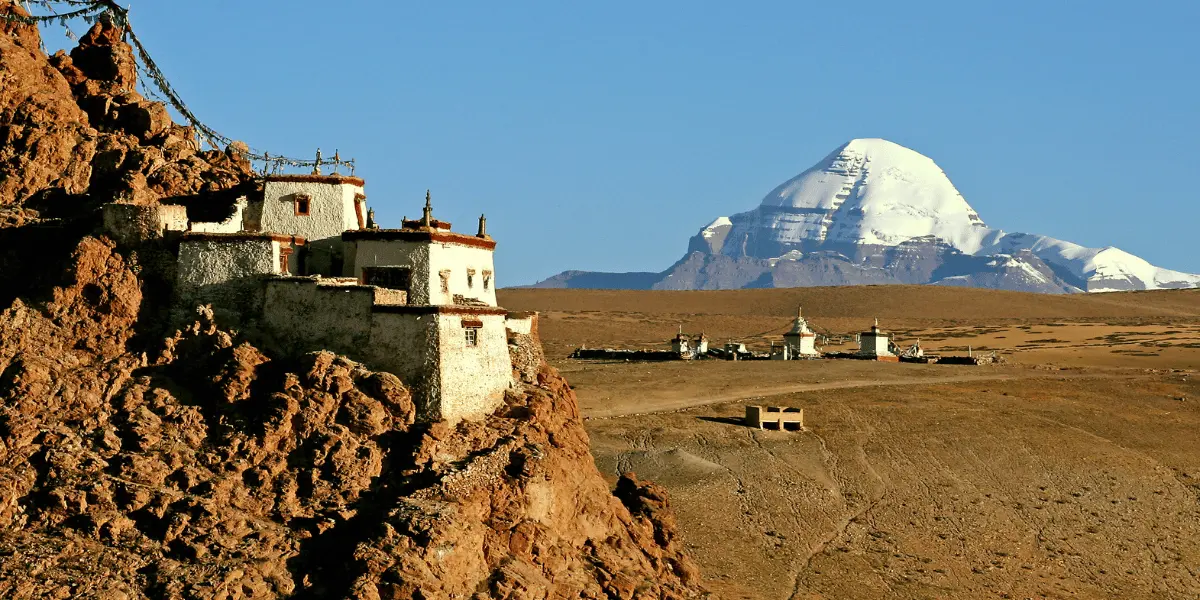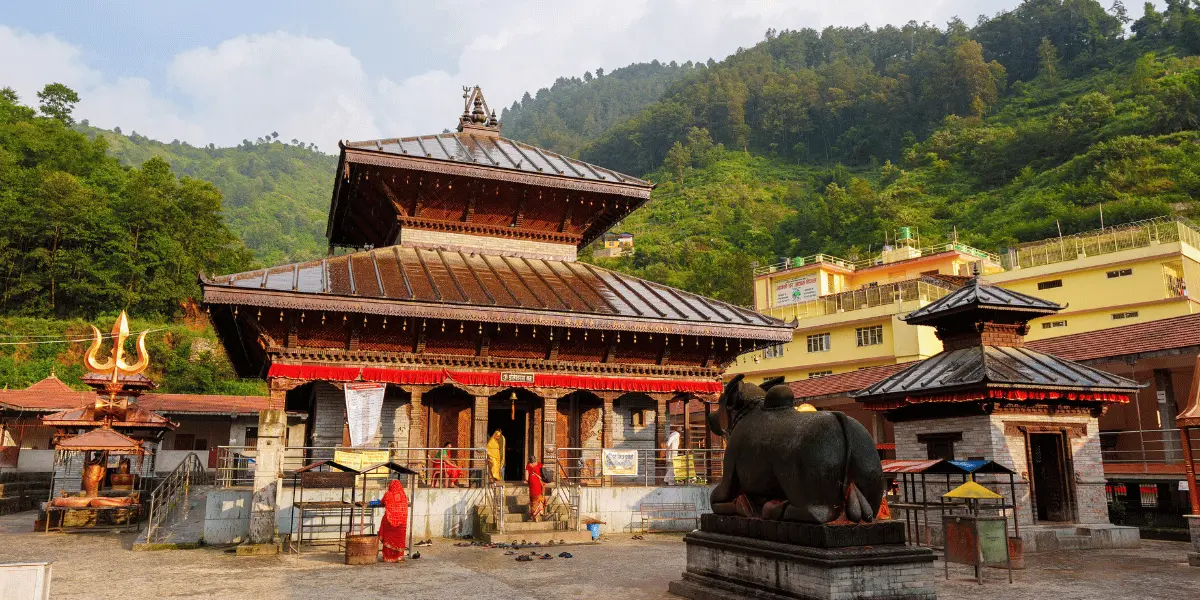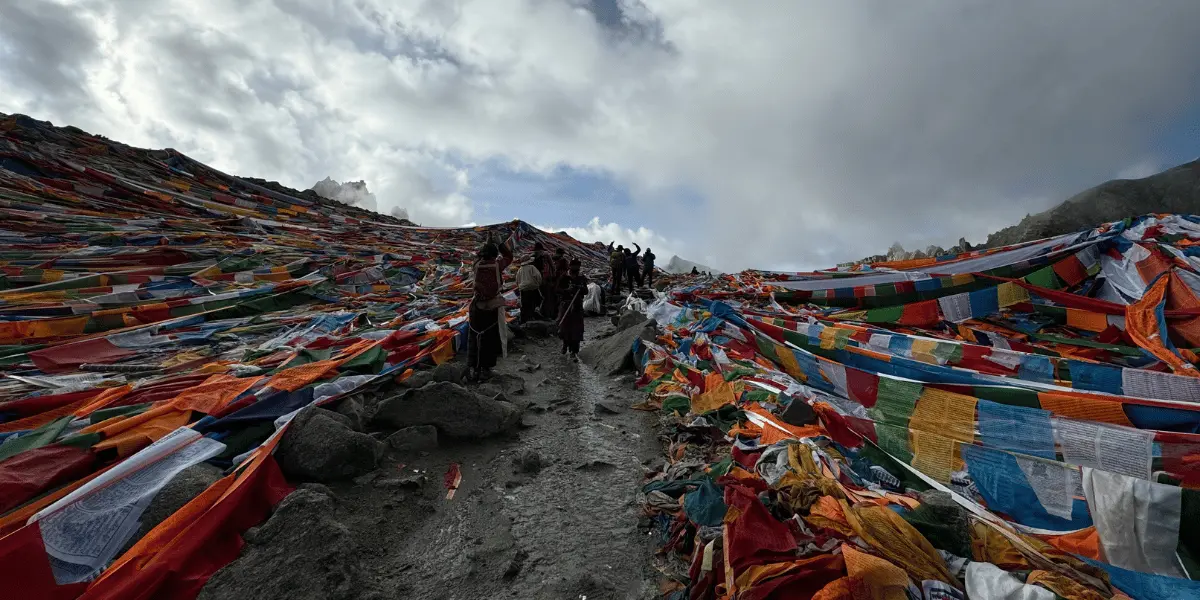Make the most of your spiritual Kailash Mansarovar Yatra by including a visit to Tibet's vibrant capital. Our Kailash Mansarovar Yatra via Lhasa with Everest Base Camp is a spiritual journey to the remote Tibet region, while you will also have the chance to visit the beautiful capital town, Lhasa. Along with that, you will get to explore the North Everest Base Camp from the Tibet side without having to be involved in the strenuous trek, which is also one of the primary highlights of the journey. This extraordinary pilgrimage invites you to explore the majestic landscapes of the Himalayas while immersing yourself in the rich tapestry of Tibetan culture. In this journey, you’ll explore the vibrant cities of Kathmandu and Bhaktapur, home to ancient temples and bustling markets on the Nepal side. While on the Tibet side, the journey to Mount Kailash is filled with breathtaking scenery, from pristine lakes to rugged terrain, including Lake Mansarovar, and some additional cultural attractions as well. Together, this journey as a whole creates a comprehensive experience that enriches your soul and broadens your horizons, making the Kailash Mansarovar Yatra a truly transformative journey. Curious enough? Find out more as you scroll further!
Kailash Mansarovar Yatra via Lhasa with EBC Summary
|
Trip Name |
Kailash Mansarovar Yatra via Lhasa with Everest Base Camp |
|
Duration |
17 Days |
|
Attractions |
Nepal
Tibet
|
|
Starting Point |
Kathmandu |
|
Ending Point |
Kathmandu |
|
Transportation Modes |
Drive and Flight |
|
Accommodation |
Hotels and Tea Houses |
Nepal: The Gateway to the Himalayas
As part of the Kailash Mansarovar Yatra via Lhasa, Nepal offers a wealth of attractions that enrich the pilgrimage experience. making it an integral part of the spiritual journey. From the bustling capital of Kathmandu to the tranquil beauty of Bhaktapur, each destination provides unique insights into the country’s rich heritage and culture, allowing pilgrims to immerse themselves in the profound spiritual atmosphere before you proceed further towards the journey.
Kathmandu City
Starting with Kathmandu, the vibrant capital, pilgrims will explore its cultural and historical treasures. The Kathmandu Valley, with its UNESCO World Heritage Sites, features religious and cultural sites like the mighty Pashupatinath Temple, the serene Jal Narayan Temple, and the historic Patan Durbar Square, which you will visit in your tour. These ancient monuments provide a profound spiritual atmosphere and a glimpse into Nepal's rich heritage, setting a reflective tone for the journey ahead.
The city’s diverse population adds to its vibrant energy, and visitors can indulge in authentic Nepali cuisine, shop for handicrafts, and experience local festivals. With its majestic mountain backdrop and warm hospitality, Kathmandu provides the perfect beginning to the spiritual journey ahead.
Bhaktapur City
Just a short drive from Kathmandu, Bhaktapur is a well-preserved mediaeval city that showcases the architectural brilliance of the Newar community. Known for its stunning Durbar Square, intricately carved temples, and traditional pottery, Bhaktapur offers a glimpse into the rich cultural heritage of Nepal.
The ancient city of Bhaktapur presents a glimpse into Nepal’s rich history and artistic heritage around Bhaktapur Durbar Square. This mediaeval city is famous for its well-preserved architecture, vibrant local crafts, and traditional Newari culture. The intricate carvings of the 55-Window Palace and the majestic Bhairav Nath Temple are just a few highlights that showcase the artistic excellence of the region. Walking through the cobblestone streets, pilgrims will experience the warmth of local hospitality and the charm of timeless traditions. Moreover, stretching a little bit more, you will also visit some nearby sites such as Doleshwor Mahadev and Kailashnath Mahadev Statue, two of the significantly religious landmarks of Kathmandu.
Additionally, Nepal’s easily accessible location serves as a vital link to the Himalayan region, providing essential services and logistical support for the Yatra. The well-established infrastructure ensures a smooth transition between the Tibetan and Nepali portions of the pilgrimage. Pilgrims benefit from comfortable accommodations and experienced guides, making their journey to Kailash Mansarovar both memorable and seamless. All in all, Nepal’s diverse landscapes and rich cultural heritage make it an ideal starting point for the Yatra.
Tibet: The Land of Spiritual Majesty
The Tibetan side of the Kailash Mansarovar Yatra is a journey into one of the most spiritually revered regions in the world. This pilgrimage invites travellers to explore not only the stunning landscapes of Tibet but also the profound cultural and spiritual heritage that defines this mystical land.
Lhasa Exploration
As we begin our pilgrimage in Lhasa, travellers will be captivated by the breathtaking landscapes and profound cultural heritage of Tibet. Lhasa, the capital city, is a highlight of the journey, featuring iconic sites such as the Potala Palace, the former winter residence of the Dalai Lama, and the Jokhang Temple, considered the holiest shrine in Tibetan Buddhism. Exploring these historical landmarks provides pilgrims with insight into the rich spiritual traditions that define this mystical land.
A visit to Drepung Monastery, once one of the largest monasteries in the world, reveals the intricate monastic life of Tibetan Buddhism. Here, travellers can witness the daily rituals of monks, participate in prayer sessions, and explore the monastery’s expansive grounds, which are steeped in history. Similarly, Sera Monastery, known for its lively debates among monks, showcases the intellectual and spiritual rigour of Tibetan Buddhism. The vibrant atmosphere and the monks’ passionate discussions create an engaging experience for visitors, emphasising the importance of inquiry and understanding in spiritual practice. The last but not the least Norbulingka, the summer palace of the Dalai Lama, provides a tranquil escape with its beautiful gardens and serene ambiance.
Everest Base Camp
Reaching the base of the world's highest peak is an aspiration for many, and the Tibetan side offers a unique and accessible route to Everest Base Camp. Unlike the challenging trek from the Nepal side, the Tibetan approach provides a more comfortable experience while still delivering awe-inspiring vistas. Before reaching the base camp, a visit to Rongbuk Monastery is a must. The world's highest monastery, it offers a serene atmosphere and stunning views of Everest. Witnessing the monks' daily rituals amidst such a breathtaking setting is a truly spiritual experience.
Arriving at Everest Base Camp is a surreal moment. Located at an altitude of 5200 m, travellers are greeted by an awe-inspiring sight: the towering presence of Mount Everest, or Chomolungma, rising dramatically above the sky. While the base camp on the Tibetan side is not as crowded as its Nepalese counterpart, it still offers a profound connection to the mountain. The clear air and often cloudless skies provide unparalleled views of Everest and its surrounding peak.
Mount Kailash
As we venture further towards Mount Kailash, the journey becomes increasingly awe-inspiring. Mount Kailash, known as Gang Rinpoche in Tibetan, is not just a majestic peak; it is believed to be the abode of Lord Shiva and holds immense significance for Hindus, Buddhists, Jains, and Bon practitioners alike. Mount Kailash, known as the "sacred mountain," stands at an impressive 6,638 m. The mountain's distinctive pyramid shape and spiritual aura make it a focal point for pilgrims seeking enlightenment and fulfilment. The Kora, or circumambulation, around the mountain is a deeply spiritual practice that allows pilgrims to connect with the divine while surrounded by stunning natural beauty. The trek offers breathtaking views of the mountain and the pristine landscapes of the Tibetan plateau, creating an unforgettable experience of both physical challenge and spiritual reflection.
Lake Mansarovar
In addition to Mount Kailash, Mansarovar Lake, situated at an altitude of 4,588 metres, is revered as one of the holiest lakes in the world. For Hindus, Lake Mansarovar is believed to be the creation of Lord Brahma and is often regarded as a manifestation of the cosmic mind. Pilgrims believe that bathing in its pristine waters can cleanse them of sins and grant them spiritual merit. They often perform rituals and prayers at the lakeside, contributing to the vibrant spiritual ambiance.
Surrounded by the majestic backdrop of the Himalayas and the striking profile of Mount Kailash, Lake Mansarovar offers breathtaking views and a serene environment. Its crystal-clear, turquoise waters are fed by the melting snow from the surrounding peaks, creating a striking contrast with the arid landscape of Tibet. The serene ambiance and the gentle lapping of the water invite travellers to pause, reflect, and connect with their inner selves.
The Tibet side of the Kailash Mansarovar Yatra is not just a physical journey; it is a profound spiritual quest that allows travellers to immerse themselves in the mystique of this sacred land, forging connections with both the mountains and their own spiritual beliefs.
What makes the Kailash Mansarovar Yatra unique?
Our Kailash Mansarovar Yatra via Lhasa with EBC is a profound spiritual experience that spans for about 17 days, back and forth between Nepal and Tibet. This yatra combines breathtaking landscapes with a deep cultural experience, offering pilgrims the chance to witness the stunning vistas of the Himalayas, vibrant Nepalese and Tibetan culture, and the tranquil beauty of high-altitude lakes.
Firstly, you will fly towards Lhasa, where travellers can explore iconic sites such as the Jokhang Temple, Sera Monastery, and Drepung Monastery, immersing themselves in Tibetan Buddhist culture. As you travel through Shigatse and Saga, you will marvel at the stunning scenery of the Tibetan plateau before reaching the sacred Lake Mansarovar and the majestic Mount Kailash, a site of deep significance for millions of pilgrims. A unique aspect of this yatra is the opportunity to visit Everest Base Camp from the Tibetan side. In contrast to the difficult trek of the Nepal side, you can easily drive to the base camp on this side. Standing at the foot of the world's highest peak provides a breathtaking experience that is both awe-inspiring and humbling.
The highlight of the journey is the circumambulation of Mount Kailash, a challenging yet rewarding trek that symbolises the path to spiritual awakening. Pilgrims can expect to partake in rituals and prayer ceremonies at Mansarovar Lake, as well as the challenging Kora around Mount Kailash, which spans approximately 52 KM. This trek is not only physically demanding but also spiritually enriching, as participants engage in the traditional practice of circumambulating this revered mountain. Overall, the Kailash Mansarovar Yatra via Lhasa with EBC offers an unparalleled experience that combines physical endurance with spiritual fulfilment, leaving travellers with lasting memories and a profound sense of connection to their faith.
Our Kailash Mansarovar Yatra via Lhasa with Everest Base Camp trip is a life-changing journey that beautifully combines spiritual discovery with stunning natural landscapes. Experience the vibrant culture of Nepal and the rich heritage of Tibet as you trek to the sacred Mount Kailash and tranquil Lake Mansarovar. This pilgrimage offers a unique opportunity to connect with your inner self and gain a profound sense of peace. Don’t miss out on this chance to embrace the best this tour has to offer.



